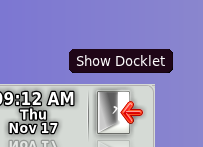In the portal, the user detail screen now allows you to set the record as a bookmark and also the UI has been cleaned up for setting a watchdog to alert you when the user logs either on or off the network. Very often someone in IT will have an action item to fix something for the end user that requires them to be logged out. Now we don't have to watch them manually.

The thin client detail screen now has the ability to record a movie (cyan below) of the user session using the wonderful vnc2swf utility. We can see their session, it records a swf file at the same time. These files are easily opened in browsers and can be sent to vendors to show them multiple steps. Similar to the user detail screen, you can configure a watchdog item for when a thin client is powered on. You can also set a thin client as a bookmark. These simple little things save lots of times and lots of scribbled pieces of paper.

I'm revisiting the clunky UI of the charts generated on the server summary screen. Right now it's just creating an image with perl. Simple, but not elegant. Sure would be nice if we had some charts in GTK that had hover tooltips. Maybe some Googling will find something that works better. You can also see that our two GNOME servers are now running 80+ concurrent users (circled in green). Loads are great, and capacities will be increased as we go through the month of December. The concurrent loads of the various software packages can be seen below as well. CPU loads are excellent.

Groupwise 2012 was released for beta testing as part of a technology preview. I built a new SLES 11 server on some old physical hardware and got the pieces working. Probably all of the design considerations being discussed warrant an entire blog update; but we are reviewing the concept of just using a web interface instead of Evolution to gain access to Groupwise. In the past this was not an option because the UI was a bit clunky and major features (such as free/busy) were missing. GW 2012 has moved in the direction of having the web interface be your primary login. Seems like maybe the days of having a client piece for email might be nearing an end. The shot below shows 2012 running. GW detects an iPad/tablet login and presents and interface designed for that footprint. I should be able to begin testing that aspect in the coming days. So far it's much nicer than the older interface.

On deck for me: continued testing of GW 2012, more testing of Evolution patches we just received, increasing the number of users logged into the new GNOME servers, implementing some user suggestions to make the thin clients interact better with digital photos, iPad testing, MoinMoin 2.0 beta testing.







